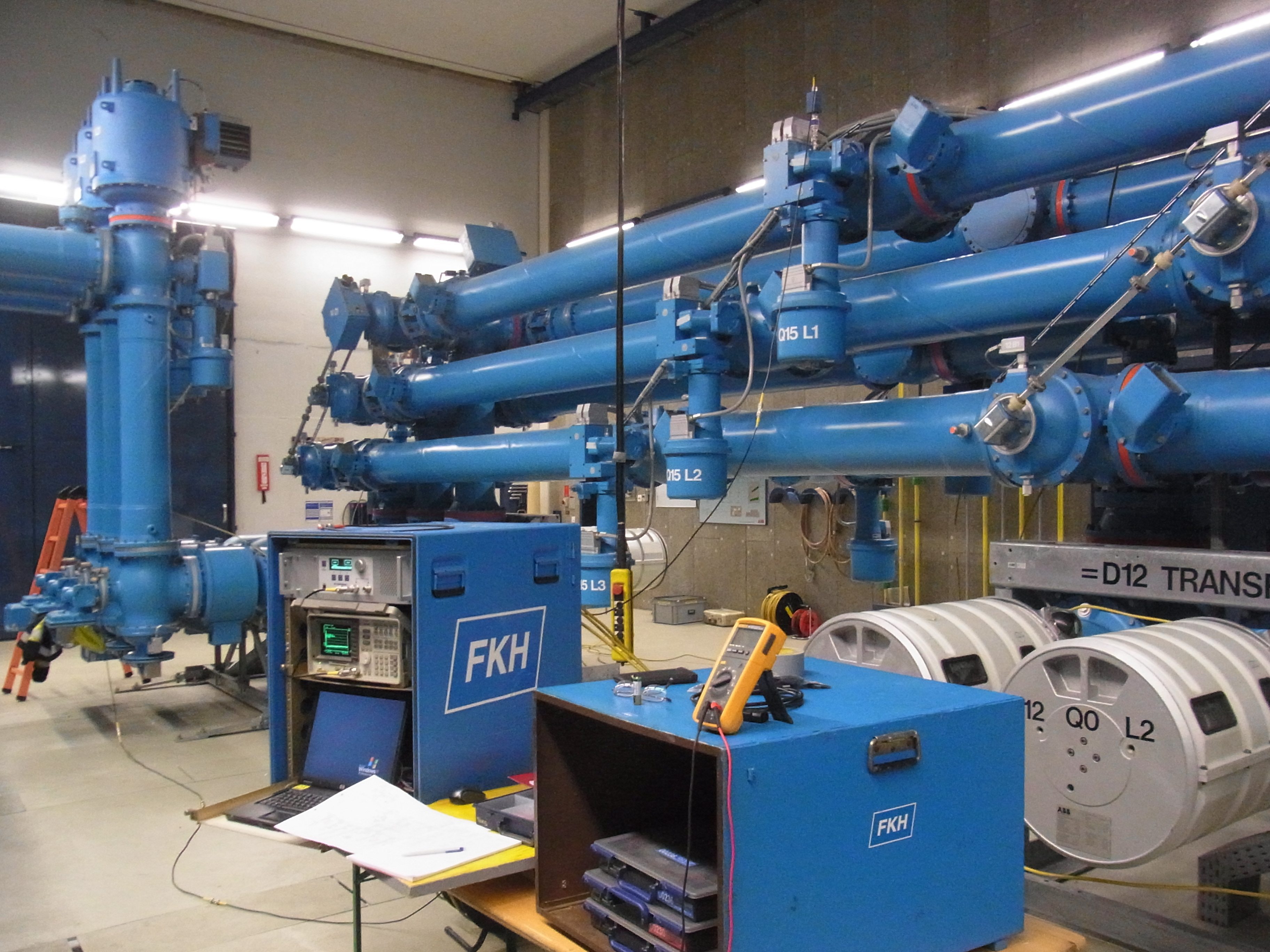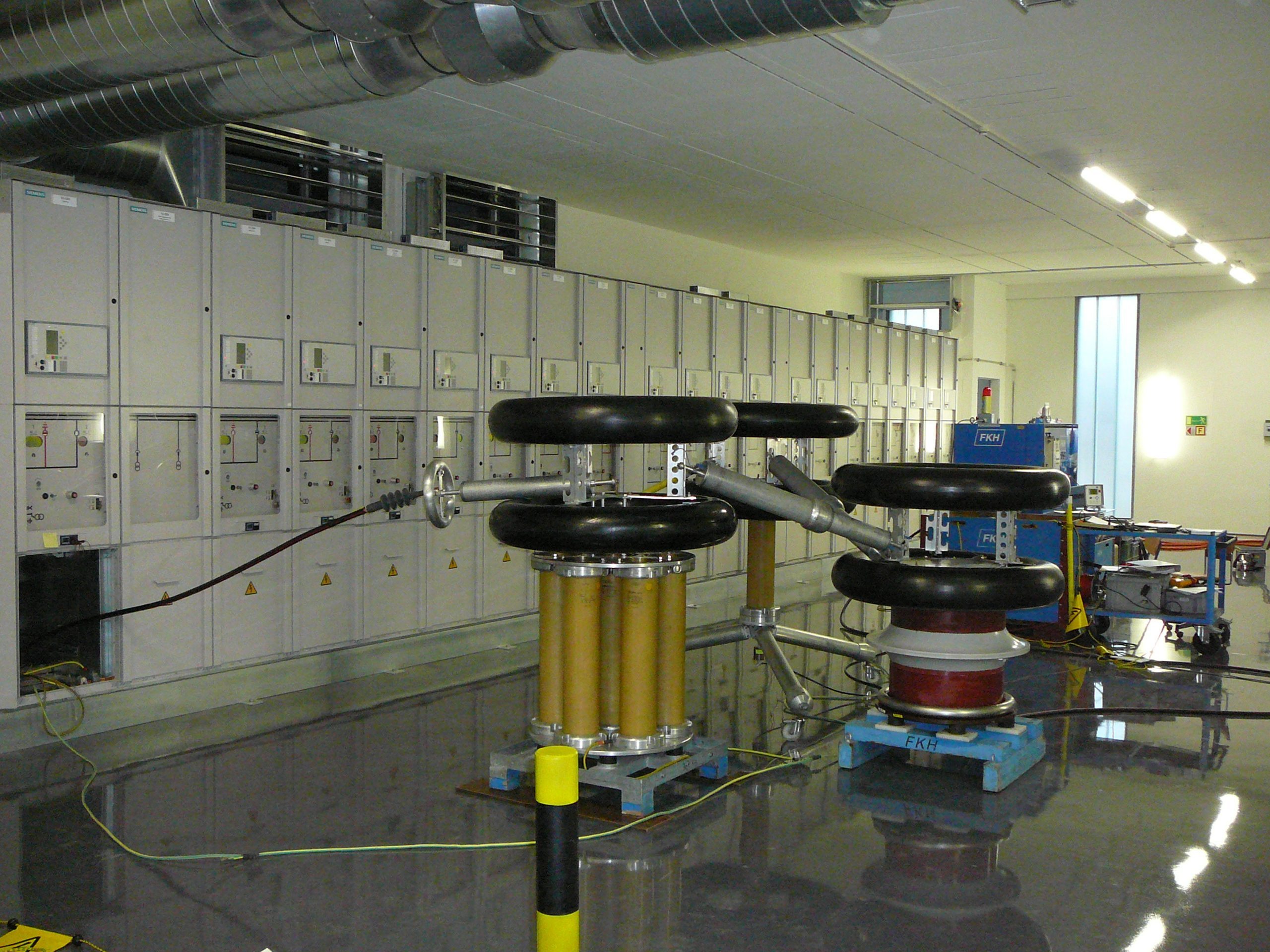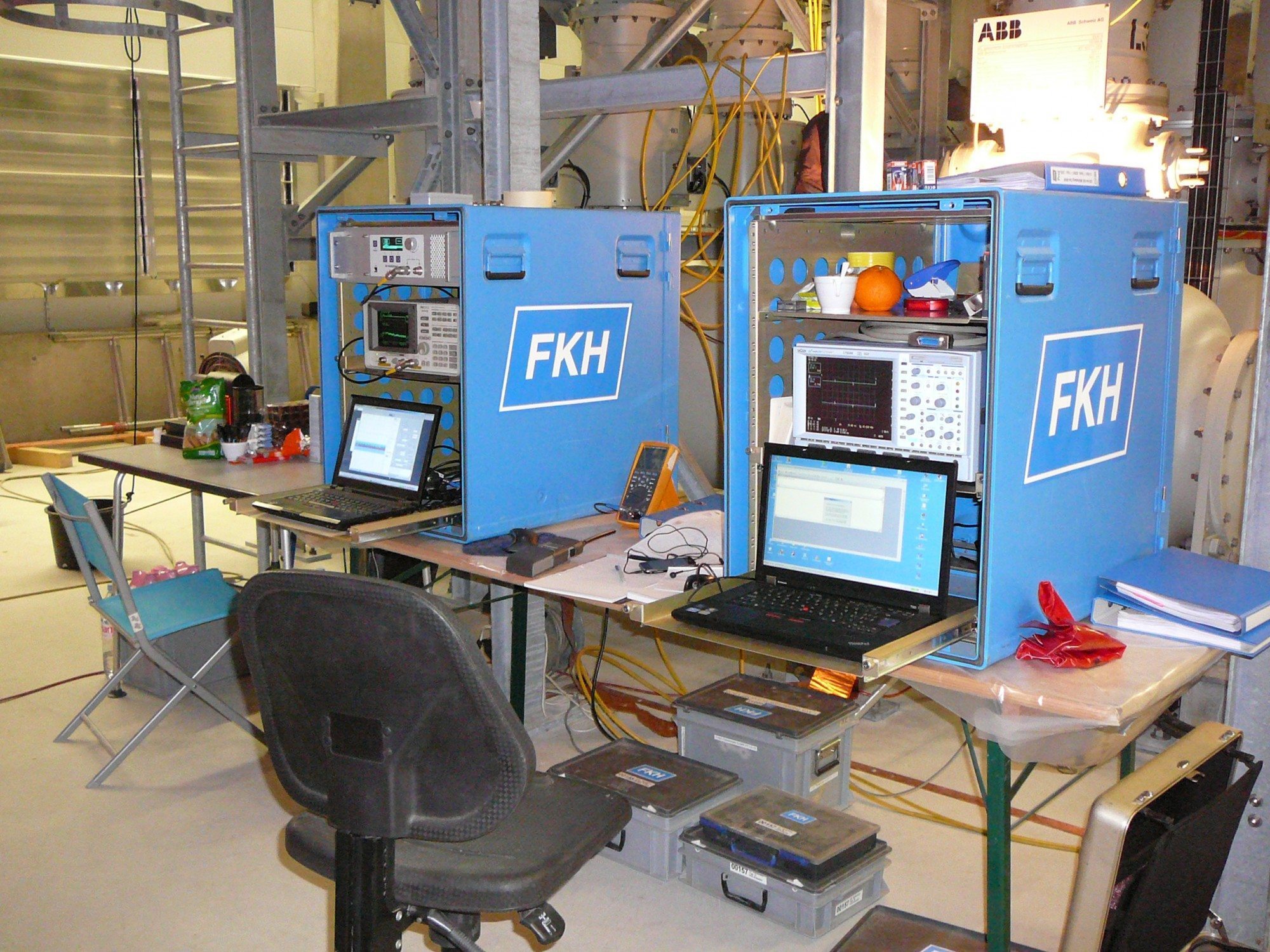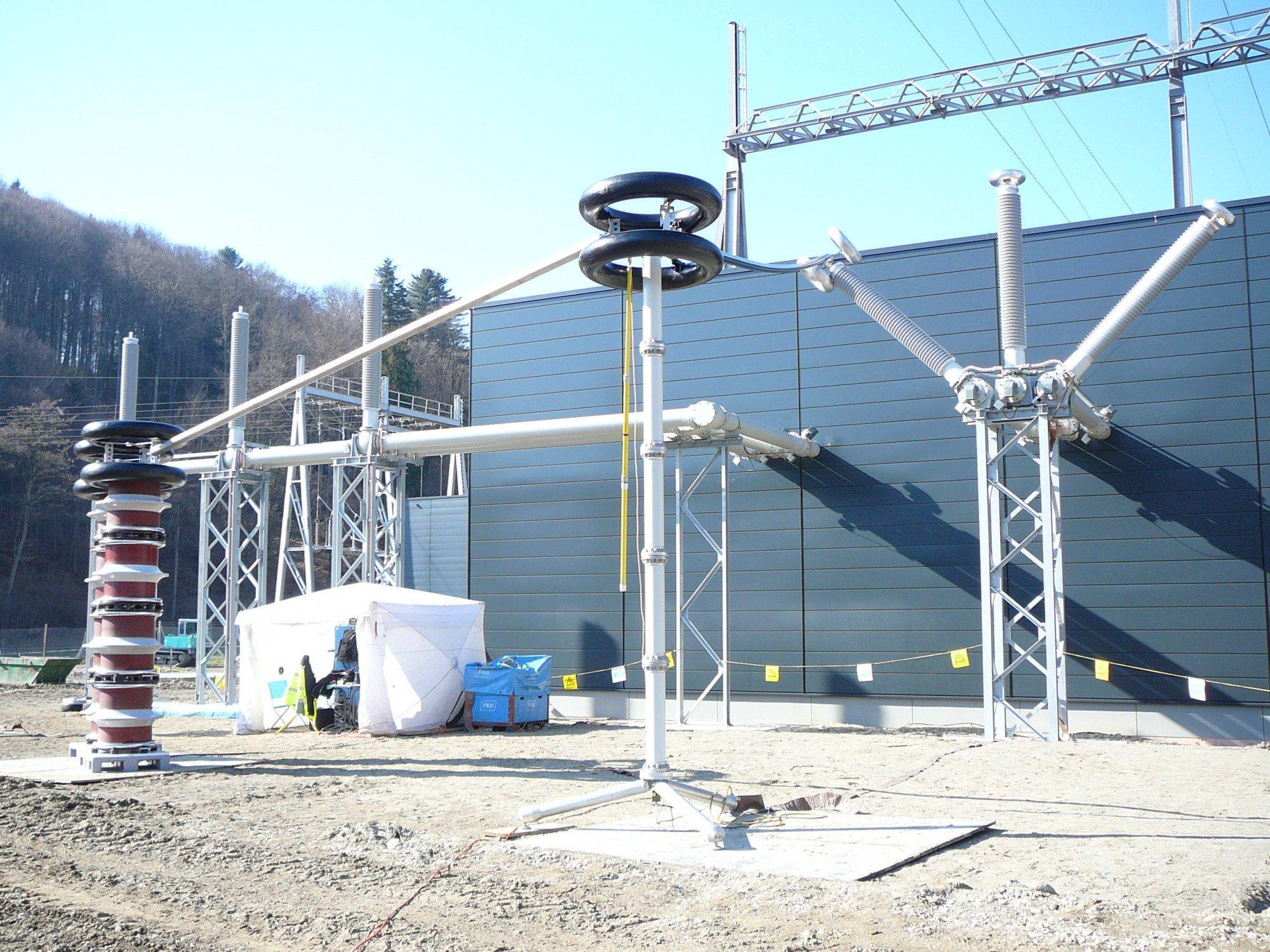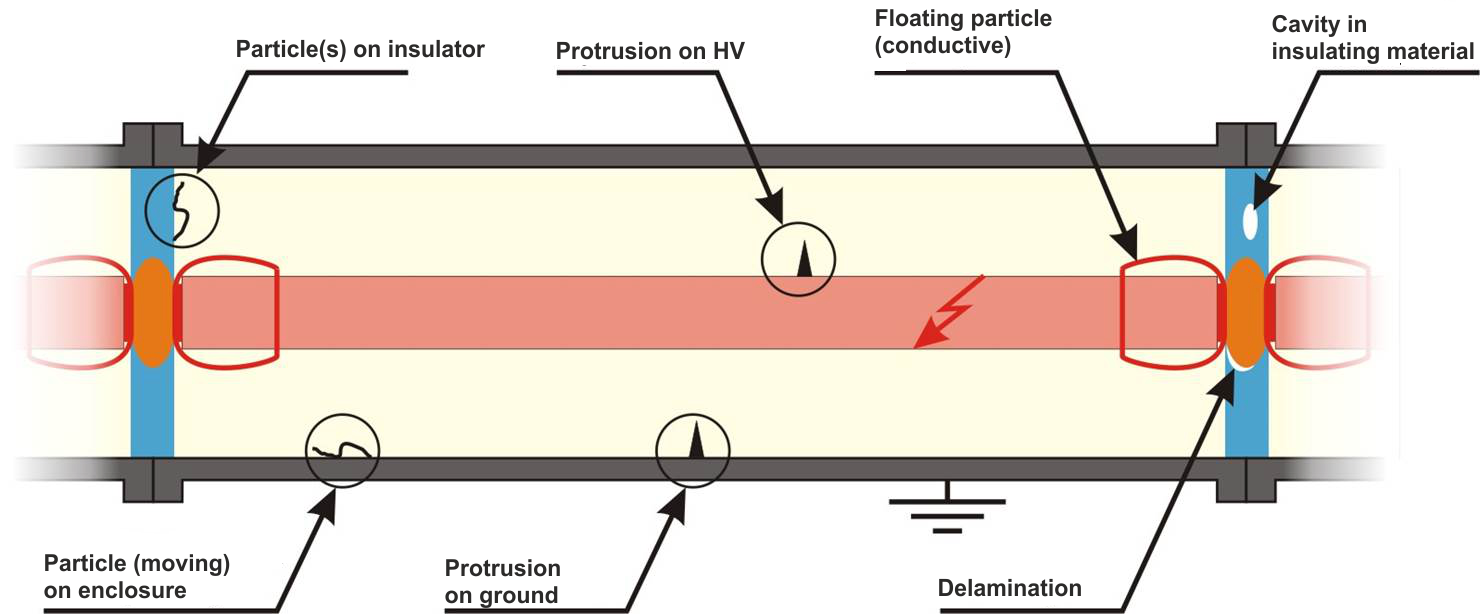Testing of gas-insulated switchgear (GIS)
Substations are important network nodes that must provide high availability. The projected service life of gas-insulated switchgear (GIS) is 35 – 50 years, during which its insulation system has to withstand all voltage loads without maintenance.
According to the latest fault statistics from CIGRE (International Council on Large Electric Systems), the target set by the IEC (International Electrotechnical Commission) of less than 0.001 faults per year for a system’s insulation has still not been attained. These statistics also indicate that about 50% of dielectric faults occurring during operation were already present when the systems were commissioned. This results in a requirement for more careful and stringent testing in the factory and – in particular – on site.
As an independent institution, FKH has carried out state-of-the-art GIS testing since the 1980s; it also undertakes research and participates in publication activities and other work related to this subject in international specialist bodies. Thanks to its neutral stance, FKH can assess failures without conflicts of interest on the basis of transparent measurements.
Reasons for performing high-voltage tests and diagnostic measurements and their benefits
Insulation diagnosis (such as a partial discharge measurement) will typically be carried out on GIS in the following cases:
- When a new system is commissioned (as part of the voltage testing)
- When systems are extended – after accidents
- Following activation of partial discharge monitoring systems (in-service measurements in some cases)
- After weak points have been identified
- To determine the condition of the insulation (old systems, in-service measurements)
The usual test procedures are as follows (IEC):
- AC voltage test
- Partial discharge measurement
- Lightning surge test
FKH assists its customers with all aspects, including GIS insulation tests, and offers support and advice throughout the entire project:
- Test specifications for tenders, including placement of UHF sensors
- Testing instructions (e.g. for the high-voltage acceptance test)
- Performance of all insulation tests on high-voltage switchgear
- Integral tests with connected high-voltage cables are also possible
- Diagnosis and root cause analysis, including in-service assessment
- Expert opinions
Measurement and testing options
- AC voltage test with series-resonant systems
- Conventional partial discharge measurements as per IEC
- UHF partial discharge measurement, including the sensitivity verification as per CIGRE. The most sensitive of all UHF partial discharge measurement methods is used:
narrow-band measurement with visual selection of the measurement frequency, together with a 50 dB pre-amplifier directly on the UHF PD sensor. In particular, this method allows detection of critical faults with a very low partial discharge amplitude (e.g. particles on insulation material) that could lead to a breakdown during operation in case of transient stress (e.g. lightning). - Lightning surge tests (with oscillatory surges where appropriate)
- Localisation of test breakdowns with a breakdown localisation system
- Localisation and identification of partial discharge findings by:
- Rough localisation via partial discharge frequency spectra and GIS sectioning
- Signal arrival-time-based PD location with state-of-the-art oscilloscopes
- Acoustic partial discharge measurement using ultrasonic sensors
- Video endoscopy with remote-controlled swivelling cameras inserted in the GIS
- Microscopy and characterisation of particles/findings
- Assessment of findings
Fault types
The application of test methods is merely one aspect of testing. When diagnosing dielectric faults (especially during a partial discharge measurement), the test engineer’s experience plays a critical part in ensuring an efficient and effective test procedure. Expert assessment of partial discharge occurrences, elimination of the partial discharge source and consideration of the need for further investigations may all be decisive factors in preventing future GIS failures.

